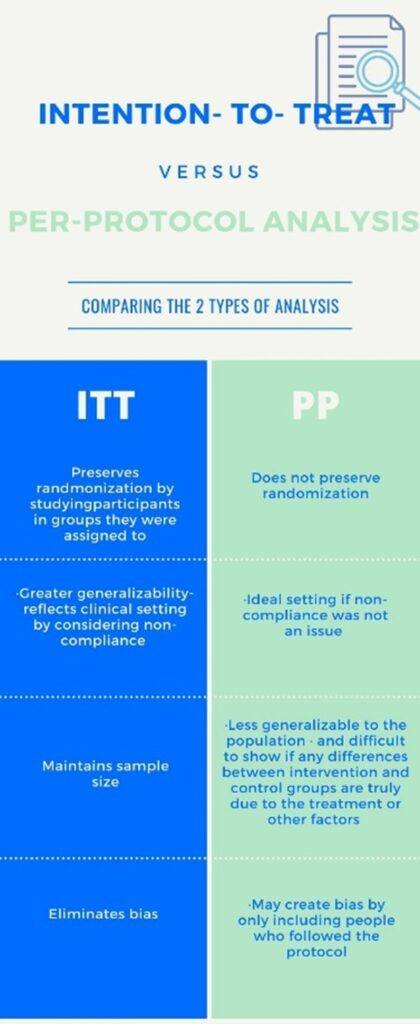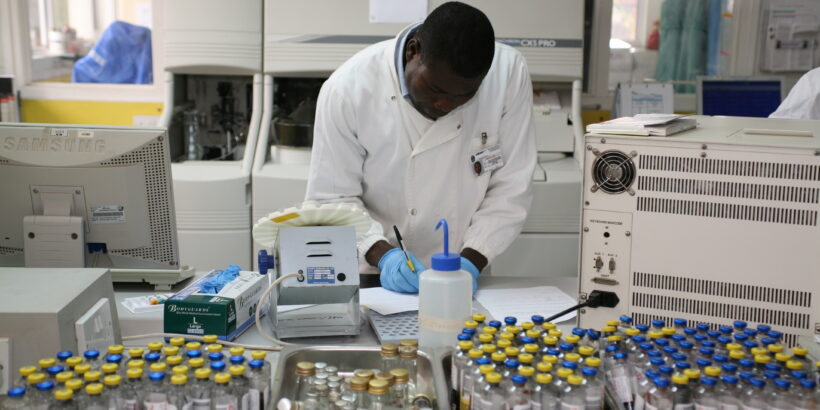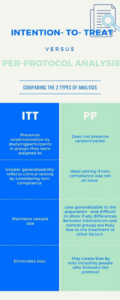Have you heard the terms “intention-to-treat (ITT)” and “per-protocol (PP)” analysis and been unsure of the difference? Or why both are important?
As in most vaccine efficacy research, some typhoid conjugate vaccine (TCV) efficacy studies reference these terms. Understanding the distinction between these two concepts allows for a greater appreciation of vaccine research, data analysis and interpretation, and the work of biostatisticians.
Terminology breakdown
Let’s start with some definitions. The World Health Organization (WHO) defines vaccine efficacy as “a measure of how much the vaccine lowered the risk of getting sick.” In randomized controlled trials, researchers randomly assign participants to a group that receives the vaccine being studied or a group that receives a placebo. Once the participants are vaccinated, researchers study each group’s outcomes to determine if the vaccine is safe and effective.
In an ITT analysis, participants are studied in their randomized groups regardless of whether they complete the study vaccination or receive another intervention instead of the assigned treatment. Participants may drop out of studies for myriad reasons. For example, they may have moved away from the study location. ITT considers all randomized participants in the analysis, whether they drop out or not.
Conversely, in a PP analysis, researchers only analyze data from those who strictly adhered to the study protocol. All others – such as participants who moved, who did not complete the intervention originally allocated, or who may have taken a concomitant medication they should not have – are excluded from the vaccine efficacy analysis.
Intention-to-treat vs. per-protocol
The Consolidated Standards of Reporting Trials (CONSORT), which provides recommendations for reporting clinical trials, considers ITT the gold standard approach. ITT and PP analyses should be reported alongside each other for comparison. However, the key features below help explain why CONSORT regards ITT as the best method.

Current approaches
As CONSORT recommends, reporting both intention-to-treat and per-protocol efficacy results in parallel allows for transparency about vaccine’s efficacy within the relevant context.
Both analyses provide context that might not be clear in isolation. Per-protocol and intention-to-treat are complementary – i.e., one does not replace the other – and they answer different questions (ITT: effect of offering the treatment vs. PP: effect of actually receiving the treatment), although the results should ideally be similar.
Real-world applications
In the TyVAC TCV efficacy study in Malawi, the final manuscript reported both vaccine efficacy results. The efficacy of TCV was 80.7% in the intention-to-treat analysis and 83.7% in the per-protocol analysis.
In this case, the per-protocol efficacy is higher than the intention-to-treat efficacy. This is because per-protocol is likely to overestimate the treatment effect by excluding those who are not compliant from the analysis.
It is important to keep these definitions in mind when interpreting results and sharing data with policymakers. In the real world, people may not follow an ideal protocol when receiving vaccines. Policymakers should consider all available data when making decisions about health priorities.
The significance of statisticians

Professor Voysey’s award highlights the critical role biostatisticians play in advancing the field of medicine and helping ensure health policy decisions are based on sound scientific research and results.




